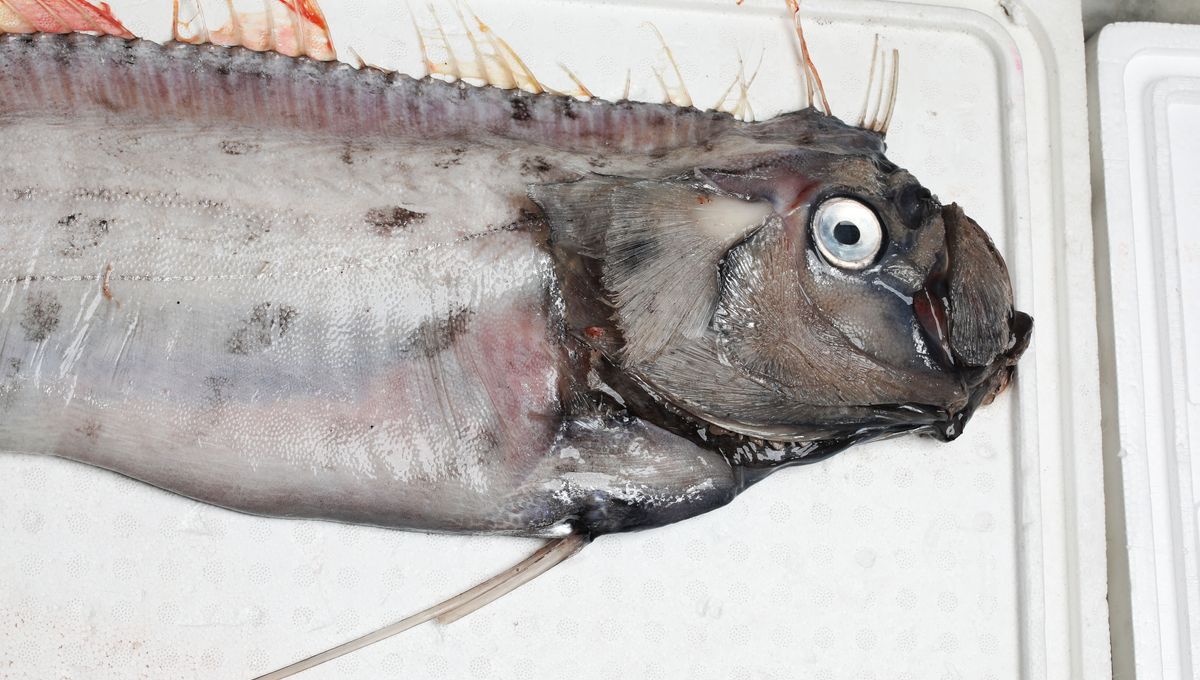
Not to sound superstitious or anything, but yet another oarfish has washed up in California. In early November 2024, Scripps Oceanography PhD candidate Alison Laferriere came across a dead oarfish, measuring roughly 2.7 to 3 meters (9 to 10 feet) in length, that had washed up on Grandview Beach in Encinitas.
The discovery follows at least two other oarfish strandings in California over the past few years. The first, measuring up to 3.7 meters (over 12 feet) in length, was beached in San Diego back in August. Another heavily degraded oarfish was then found in September along Huntington Beach, according to CNN.
Three oarfish strandings in three months is an exceptional rate; around 21 oarfish have been found on California’s shores since records began in 1901.
Oarfish are the longest bony fish known to live in the ocean, growing up to about 8 meters (26 feet) in length – that’s almost as long as a London bus. They are scarcely seen by humans because they dwell in the ocean’s “twilight zone” at depths between 200 to 1,000 meters (656 to 3,280 feet), so their presence is often treated with intrigue and suspicion.
According to some retellings of Japanese legend, sighting the rare deepfish is a harbinger of earthquakes, tsunamis, and other misfortune. It’s a juicy idea, but it doesn’t stand up to scrutiny. A study in 2019 investigated whether there was any link between 336 fish sightings and 221 earthquakes in Japan, concluding that only one event was correlated.
Scientists at the Scripps Institution of Oceanography believe that the uptick in oarfish strandings may be significant, although they’re not betting on any supernatural explanation. Using samples of the stranded fish, their researchers hope to uncover evidence that might point them toward an answer.
“It may have to do with changes in ocean conditions and increased numbers of oarfish off our coast,” Ben Frable, manager of the Scripps Oceanography Marine Vertebrate Collection, said in a statement posted to Facebook.
“Many researchers have suggested this as to why deep-water fish strand on beaches. Sometimes it may be linked to broader shifts such as the El Niño and La Niña cycle but this is not always the case. There was a weak El Niño earlier this year. This wash-up coincided with the recent red tide and Santa Ana winds last week but many variables could lead to these strandings,” he said.
Along with understanding the cause of the deaths, the team hopes to use the samples to learn more about this mysterious fish – after all, opportunities to study these elusive beasts are scarce.
“Like with the previous oarfish, this specimen and the samples taken from it will be able to tell us much about the biology, anatomy, genomics and life history of oarfishes,” added Frable.
Source Link: Once Seen As A Bad Omen, A Third 3-Meter Oarfish Washes Up In California